UIAA supports stricter rules on Everest
Backing for the Nepalese authorities: The International Climbing and Mountaineering Federation (UIAA) “fully supports the decision to propose more stringent measures for climbers wishing to scale the world’s highest peak, Mount Everest (29,029ft / 8,848m)”, as it said. These measures will include individuals having to prove they have already scaled a peak higher than 6,500 meters, thus eliminating the possibility of novice climbers scaling the mountain. “Everest should become a mountaineers’ mountain again”, said UIAA president Frits Vrijlandt.
![]() read more
read more
Alexander Huber: “Gamblers have never got far in the mountains”
The Huber brothers will continue to go on joint expeditions, but probably not to Latok I. Whereas Thomas Huber raved about the still unclimbed North Face of the 7,145-meter-high granite mountain in the Karakoram when I met him three weeks ago, his younger brother Alexander seems to have definitely written off the project due to their experiences last summer. I talked to the 46-year-old climber at the Alpine Trade Fair in Innsbruck last week.
Alexander, on Latok III, during your acclimatization for climbing the North Face of Latok I, you were are almost blown out of the wall by the blast wave of an ice avalanche. Your brother told me that never before it had been so close. Have you felt like he did?
It was definitely close. We had noticed the serac and therefore placed our camp far away from it. We were lucky that we had dug out a small platform to position the tents perfectly. The small snow edge of this platform has saved our lives. Otherwise we would have been blown away. In this respect, our risk management worked. But it was much, much closer than I ever imagined. And that’s shocking.
![]() read more
read more
The tireless weatherman
“I’m retired, but not tired or unhappy”, says Karl, called “Charly” Gabl. “You should not slow down from hundred to one. As on the road, that would be fatal.” Four years ago, the Austrian meteorologist retired, but the 68-year-old weatherman is still advising many professional climbers during their expeditions in the Himalayas or Karakoram. “I’m doing this voluntarily. For example last summer, I advised the Huber brothers on Latok I where they did not succeed due to the warm weather and were almost killed by an ice avalanche”, Gabl told me when I met him at the Alpine Trade Fair in Innsbruck last weekend.
![]() read more
read more
Siegrist: “Adventure connected to performance”
Who says that there is nothing left to explore! During their expedition in northern India this fall, the Swiss mountaineers Stephan Siegrist, Dres Abegglen and Thomas Senf first climbed three shapely mountains, all of them almost 6,000 meters high: Bhala (also called “Spear”, 5,900 m), Tupendeo (5,700 m) and Te (translated “Crystal”, 5,900 m), each of them on challenging routes. Indian Kashmir is still regarded as an insider tip among climbers. Because of the conflict with Pakistan, the mountain area had been closed to foreign visitors for a long time, until it was reopened in 2003. “The region was simply somewhat forgotten”, Stephan Siegrist tells me. The 42-year-old top climber has become almost an expert for Kashmir in recent years.
Stephan, three first ascents during an expedition cannot be matched by many other climbers. Have you been on a roll?
The motivation was very high. We climbed the first two peaks rather quickly. It is a great advantage that the time you need to acclimatize for altitudes up to 6,000 meters is much shorter, you almost don’t need any time. And the weather conditions were great.
![]() read more
read more
Auer: “Everything else becomes unimportant”
Anyone who has ever climbed a very high mountain knows about the dangers during the descent. Not the dangers of the mountain itself, but of your own body. Suddenly all adrenaline is used up, you feel the pain that you have pushed away during the ascent, you are exhausted, only want to get down quickly and run into danger of losing your concentration. It’s not for nothing that many accidents happen on descent – like on the 6,839-meter-high Nilgiri South in Nepal, where the Austrian Gerhard Fiegl fell several hundred meters into depth on Monday of last week and has been missing since then. As reported, the search for the 27-year-old was meanwhile abandoned.
According to the other two team members, Hansjoerg Auer and Alexander Bluemel, the trio earlier had “successfully reached the summit after climbing through the more than 1,500 meter high South Face”. It was the first climb via the difficult wall where several other expeditions had failed in the past few decades. At the summit they noticed that their friend Gerry was “very exhausted”, Hansjoerg and Alex say. Was it symptoms of High Altitude Sickness? Fiegl’s rapid drop in performance might indicate this. At that altitude, oxygen is pressed into the longs with around 40 percent less pressure than at sea level.
![]() read more
read more
Power pilgrimage for Nepal
“We feel very sad to see ‘Ground zero’ of this huge school building”, says Sunil Krishna Shrestha, representative of the German aid organization “Nepalhilfe Beilngries” in Nepal. As reported before, the devastating 25 April earthquake had damaged the “Gerlinde and Ralf School” in the small mountain village of Thulosirubari so badly that it had to be demolished. The ruins had posed a danger to the children who had continued to play there after the quake. Meanwhile, the destroyed school building, where about 700 students from the region around the village had been taught before the quake, was leveled to the ground. “We were able to recover windows, doors and a few school desks and boards from the rubble”, Arjun Gatraj, the chairman of the school management committee at Thulosirubari, writes to me, adding that the old bricks could not be saved because the IOM (International Organization for Migration) had used heavy machinery to demolish the building.
![]() read more
read more
Search for Gerry Fiegl abandoned
The worst fears turned into sad certainty. The Austrian climber Gerhard called “Gerry” Fiegl will not return. Reiner Gerstner, company spokesman for the outdoor sporting goods manufacturer Salewa, informed me, that the search for the missing 27-year-old was abandoned: “According to information from Nepal there is no longer any hope to find Gerry still alive.” In recent days, up to one and a half meter of fresh snow had fallen in the Annapurna region, Gerstner said. Last week on Monday, on the descent from the 6,839-meter-high Nilgiri South, Fiegl had fallen several hundred meters into depth. Previously Gerry – along with his compatriots Hansjoerg Auer and Alexander Bluemel – had first climbed the difficult South Face of the mountain where several expeditions had failed in past decades. “So an until then successful expedition came to a tragic end”, said Gerstner. “We mourn the death of a friend. Gerry was one of the best.”
![]() read more
read more
Mingma Sherpa: “It was my worst mistake”
No trace of euphoria. On Wednesday last week, Mingma Gyalje Sherpa reached – as reported in my blog – the 6,685-meter-high summit of Chobutse in Rolwaling Valley in Nepal, solo climbing and for the first time via the West Face – a milestone in the history of Sherpa climbing. But instead of being cheerful the 29-year-old is simply happy that he survived his solo ascent.
Mingma, you have already been on top of Mount Everest, K 2 and five other eight-thousanders. How challenging was your solo ascent on Chobutse?
I have climbed Everest with bottled oxygen and the other six 8,000-meter- peaks without the use of oxygen. When I climbed these high mountains, I did it with partners and on routes with fixed ropes. But a solo ascent means climbing alone in free style, there isn’t any fixed rope or climbing partner to save you if you make a mistake. A mistake means the end of your life. So it is itself challenging. It took me three years to decide to go for a solo climb. Finally, I made it this year. Climbing Chobutse was my worst decision and mistake. I almost lost my life. After my summit success, I spent two nights and days without food, water or tent. I spent two threatening nights and a day at the same place in a whiteout waiting for the weather to clear up. My only satisfaction is that I made it to the summit, though it was the hardest climb of my life.
![]() read more
read more
Turning point in Sherpa climbing history
The next Sherpa coup in the Himalayas, again in Rolwaling Valley. After Nima Tenji Sherpa, Tashi Sherpa and Dawa Gyalje Sherpa – as reported – had first climbed three six-thousanders within three days at the beginning of October, Mingma Gyalje Sherpa now succeeded in doing an amazing solo ascent. The 29-year-old stated that he reached the 6685-meter-high summit of Chobutse (also called Tsoboje) climbing alone and for the first time through the West Face. He had two cold bivouacs in the wall causing frostbite at his leg. Chobutse was first climbed by the Germans Wolfgang Weinzierl, Peter Vogler, Gustav and Klaus Harder in spring 1972, via the Northeast Ridge. Several attempts to climb through the West Face had failed.
![]() read more
read more
A small glitter of hope
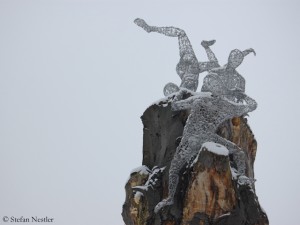 That’s the way we humans do: No matter how short the straws are, we clutch at them. There is a small glitter of hope that Gerhard Fiegl is still alive. Since Monday, the Austrian climber has been missing at the 6839-meter-high Nilgiri South in the Annapurna massif in Nepal. Three days after his 27th birthday, the mountain guide from the Oetztal – as reported – fell several hundred meters deep while his two team mates were looking on in horror. Hansjoerg Auer and Alexander Bluemel descended to Base Camp and immediately called for a rescue operation. But snowfall and fog prevented helicopter flights. The search for Fiegl is to be continued. Even if the probability to find him alive is low and decreases as each day passes, we should not give up. Even on the highest mountains, now and again there are stories of survival that are almost miracles.
That’s the way we humans do: No matter how short the straws are, we clutch at them. There is a small glitter of hope that Gerhard Fiegl is still alive. Since Monday, the Austrian climber has been missing at the 6839-meter-high Nilgiri South in the Annapurna massif in Nepal. Three days after his 27th birthday, the mountain guide from the Oetztal – as reported – fell several hundred meters deep while his two team mates were looking on in horror. Hansjoerg Auer and Alexander Bluemel descended to Base Camp and immediately called for a rescue operation. But snowfall and fog prevented helicopter flights. The search for Fiegl is to be continued. Even if the probability to find him alive is low and decreases as each day passes, we should not give up. Even on the highest mountains, now and again there are stories of survival that are almost miracles.
![]() read more
read more
Breaking News: Accident on Nilgiri South in Nepal
Sad news from the Austrian expedition to the South Face of the 6839-meter-high Nilgiri South in the Annapurna massif in Nepal: A spokesman of the Austrian Foreign Office confirmed to me that one of the three climbers who had started their first summit attempt last Thursday was missing. According to him, the climber slipped during the descent and fell about 800 meters deep while his two team mates were looking on in horror. The two climbers descended to Base Camp. Fog and snowfall hampered the helicopter rescue operation. The search was going on, the spokesman said. He gave no details about the climber who fell into the depth adding that they were in touch with his relatives.
![]() read more
read more
Habeler: “Go to Nepal – but not all to Everest!”
You would not estimate that Peter Habeler has really 73 years under his belt. Slim, wiry, tanned – just one who is still climbing mountains. Along with friends, he is currently repeating many routes in the Alps that he climbed when he was young, the Austrian told me when I met him at a mountaineers’ event in Leverkusen near my hometown Cologne last weekend: “Thankfully, I feel physically very well. But it’s going round in circles: If you train and climb a lot, you’re just in better physical shape.” Even 37 years after Habeler climbed Mount Everest along with Reinhold Messner for the first time without bottled oxygen, the highest mountain on earth is always in his mind – of course also due to the fact that he as a pioneer is questioned on Everest again and again.
![]() read more
read more
Clearing up after Hindu Kush earthquake
Again, a mountainous region was hit. Yesterday, nearly half a year after the devastating earthquake in Nepal, which had killed closed to 9,000 people, the earth trembled in northern Afghanistan and northern Pakistan. The number of registered deaths has been rising to nearly 400 so far and reportedly several thousand people were injured. As after the quake in Nepal, the rescue teams have not yet reached many remote mountain valleys in Pakistan and Afghanistan. Roads are blocked by landslides. Along the Karakoram Highway, the main connecting axis to the north, 45 landslides were recorded. Meanwhile more than half of the blocked places have been cleared up again. Landslides were also reported from the area around Skardu, the town that many climbers know because it is the starting point of most expeditions to the Karakoram.
![]() read more
read more
First summit attempt on Nilgiri South
The push is on. The Austrian Team that tries to first climb the South Face of the 6839-meter-high Nilgiri South in the Annapurna massif in Nepal has set off for their first summit attempt. I was told this by a speaker of Hansjoerg Auer in Austria. On Wednesday Hansjoerg had tweeted that their acclimatization was coming to an end and that their first attempt was about to start. Auer is climbing along with his compatriots Alexander Bluemel and Gerhard Fiegl.
![]() read more
read more
Dalai Lama: Climate change threatens roof of the world
200 meters as the crow flies away from my desk, nothing less than the future of the planet is negotiated. Until Friday representatives from around the world are debating at the World Conference Center Bonn on a new climate agreement. It is to be adopted at the global climate talks in Paris, which will begin in late November. Once again the negotiations are long and tough. The solidarity with the states that are already feeling the effects of climate change is within limits. In most cases economy beats ecology. But the clock is ticking. With only a few exceptions, glaciers are melting worldwide. Glacier Works, an organization founded by US mountaineer David Breashears in 2007, has impressively documented how far for instance the glaciers around Mount Everest have retreated during the past decades. Now the Dalai Lama has pointed to the consequences of climate change for his Tibetan homeland.
![]() read more
read more



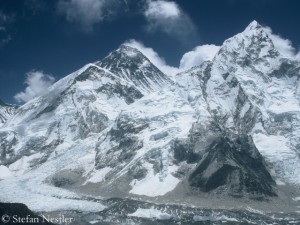

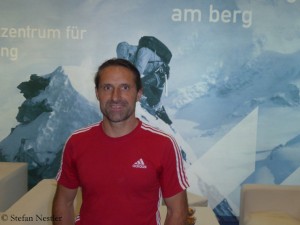
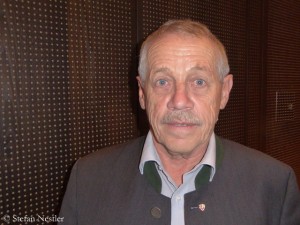
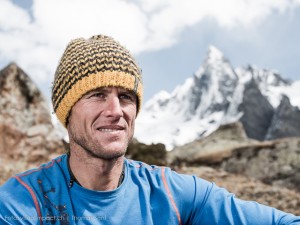

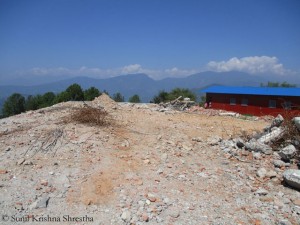
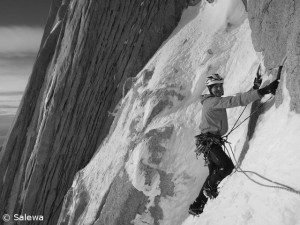
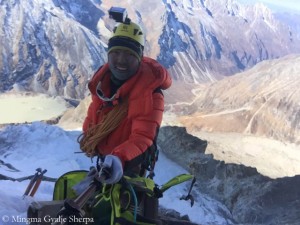
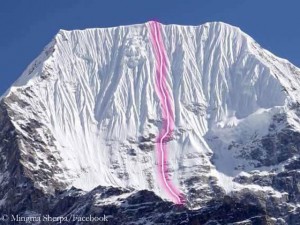
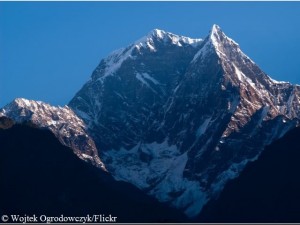
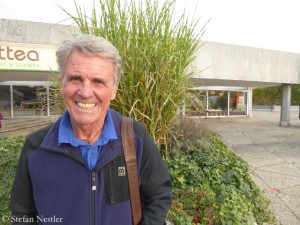
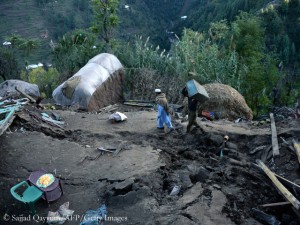
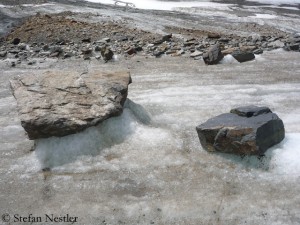





Feedback